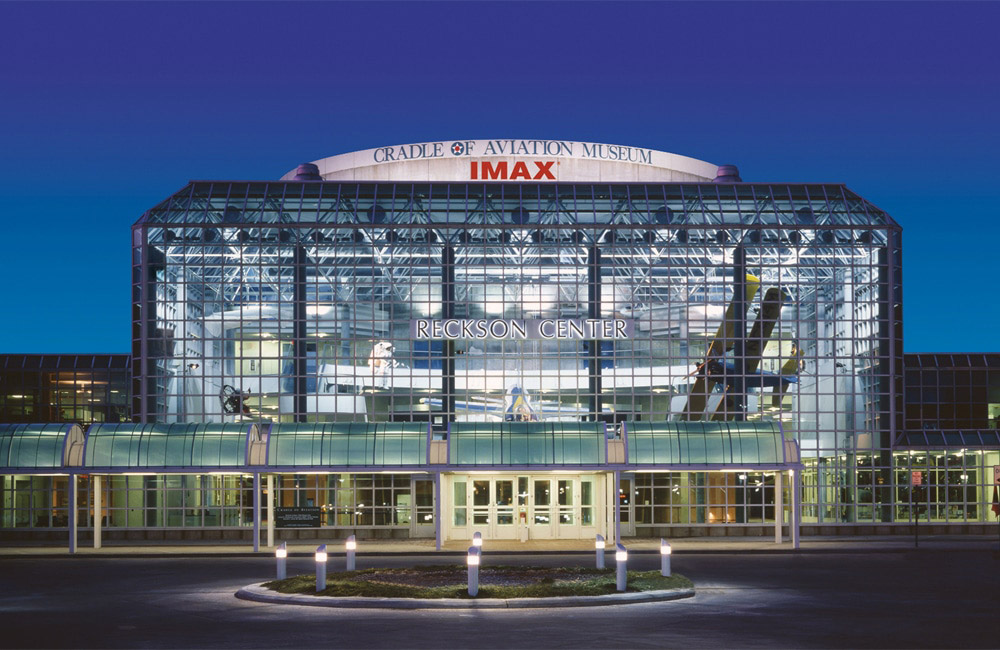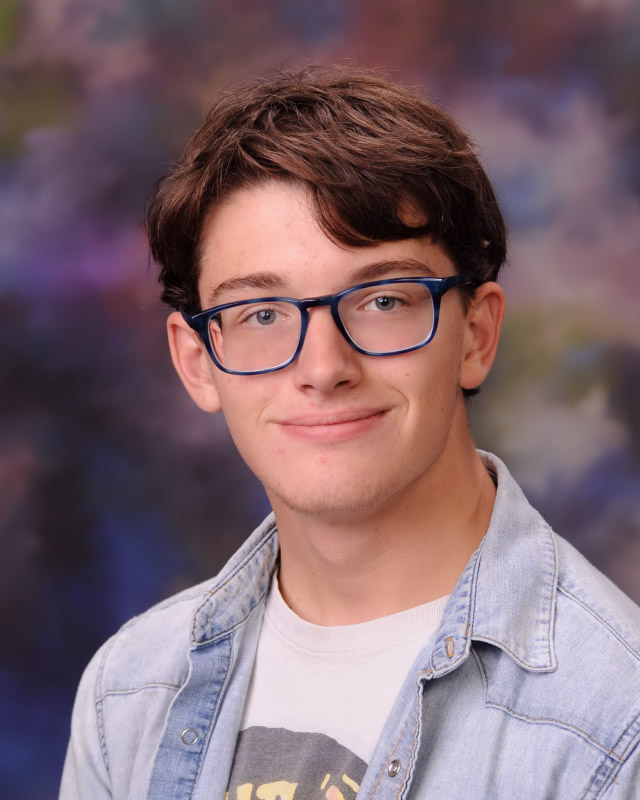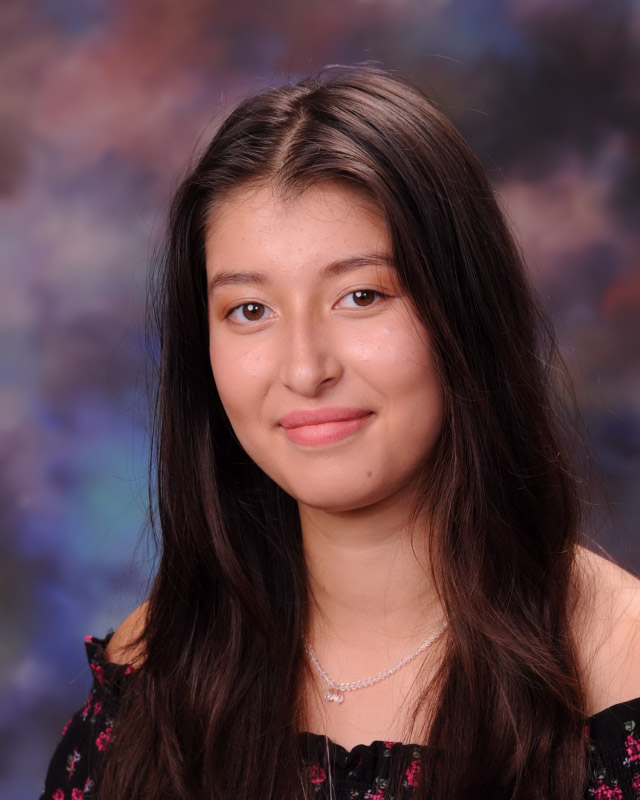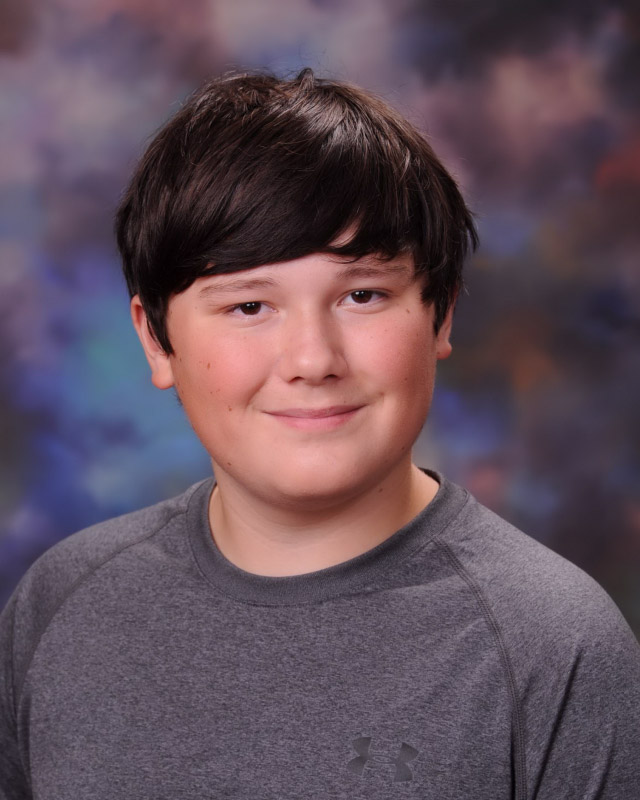A three member team of Huntington High School science research program participants captured first place in the First Annual Next Generation Science STEAM Maker-Space Competition at the Cradle of Aviation Museum in Garden City.
Huntington team members Annabella Matheus, Foster Sullivan and Bryce Vitulli were magnificent in presenting their solution to an extremely challenging problem.
Contestants were given the following background situation:
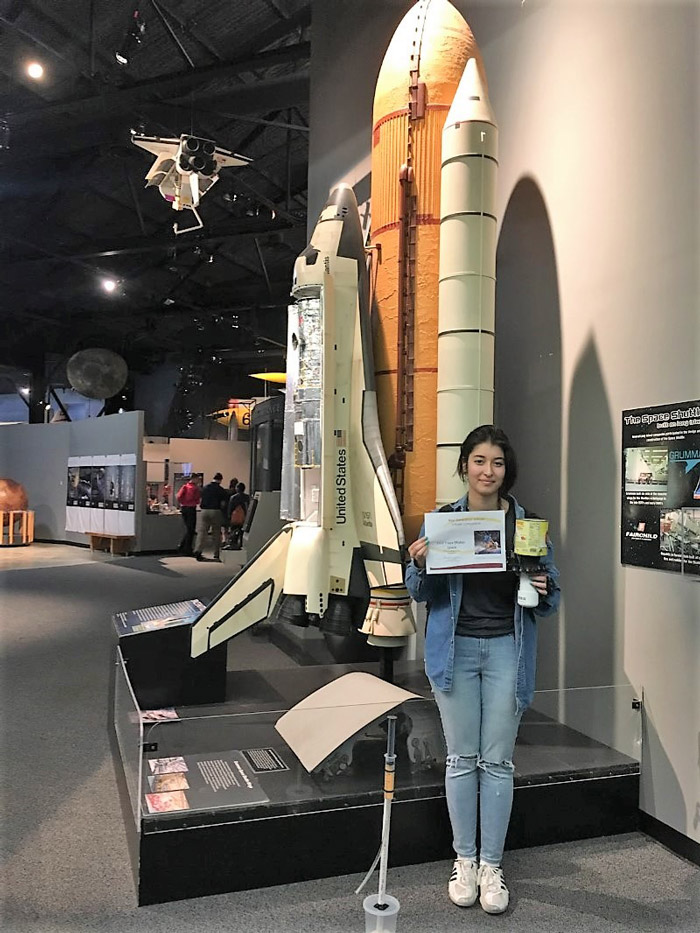
Annabella Matheus at the Cradle of Aviation in Garden City.
“An explosion aboard Apollo 13 abruptly halted the mission to land on the Moon. A previously used oxygen tank, which was damaged during installation, blew up. The command module’s supply of electricity, light and water was lost. The mission was no longer to land on the moon, but to get the crew safely back to Earth. The lunar module was designed to support two men for two days, but was not tasked with supported three men for four days. The crew had limited supplies and needed to be creative and resourceful in order to engineer a solution to return home safely.”
The competing teams were asked to improvise a situation that reflected the creativity associated with the critical situation facing Apollo 13. Designs were open-ended. Participants had to develop a space program related project, including a device to address a problem, using materials that were at least in part recycled. “Creativity will be a major variable in the including and judging of all projects,” according to the guidelines.
“I’ve always had a love of space and my grandfather actually helped work on the Gemini program,” said Ms. Matheus about the space program that helped NASA prep for the Apollo manned moon landings. “My team decided to incorporate chemistry into our project, which really helped it stand out. We took inspiration from the original Apollo 13 mission and its use of lithium hydroxide canisters to make an air filter module to avoid suffocation following the explosion. The competition asked us to address one issue that could be faced in an emergency space scenario and solve it using household objects. My team actually chose to take on two major issues and address CO2 emissions as well as obtaining more water. The average person produces 2.3 pounds of CO2 per day, so when trapped in an airtight enclosed space these emissions can lead to suffocation. Additionally, the Apollo 13 astronauts were forced to ration six ounces of water per day opposed to the appropriate 91-125 ounces.”
The Huntington research team members addressed the problems by designing an air filter to remove CO2 from the air and react with KOH to form a salt and water. “We then created a distillation device to get clean drinking water,” Ms. Matheus said. The initial challenge we were faced with was working out which chemicals we could use in place of the lithium hydroxide (since it is highly flammable) and also obtaining water as a byproduct. It took several days of testing, but eventually we decided on potassium hydroxide that’s found in household drain cleaner. The second challenge came with replicating our findings in the lab, but this time using household items instead.
Ms. Matheus said there were “a lot of variables in this project” and acknowledged that it took plenty of work to get all the research completed. “We started off with a concept I wasn’t sure we’d ever be able to create, but after a lot of hard work and research we ultimately did reach our goal,” the teenager said.
The project and competition meant a great deal to Ms. Matheus personally. “Unfortunately, I never got the chance to meet my grandfather, but I’d like to think he’d be proud of my accomplishments in this competition following in his footsteps,” she said. “I’d like to thank all the science teachers at the high school for their devotion of time for the project, especially Mrs. [Deborah] Beck, Mrs. [Lori] Kenny, and Mrs. [Dame] Forbes). It was an incredible experience and truly taught me that anything is possible if you set your mind to it.”
* * *
Huntington also entered two teams of talented students in the robotics category of the competition. The first team consisted on Matthew Gennarelli, Tim Low, David Mosden and James Obermaier. The second team featured Patrick Langton, Mike McCoy, Gabe Medina-Jaudes and Adam Neber.
Contestants were given the following background information:
“The lunar rover was developed in only 16 months. It was a model of engineering brilliance. Stored in the underside of the lunar module, it could be lowered and deployed for action. The chassis was built from aluminum alloys and designed to fold up for storage. Each wheel had its own electric drive and was powered by non-rechargeable batteries. Passive thermal controls maintained the batteries within an optimal temperature range.”
Competing teams proposed problems related to space exploration. They were then asked to construct a robot (autonomous or wired/wireless controlled) “designed to move and complete a task using a novel, low cost, intuitive and modular robotics kit called SnappyXO.” Teams were given the same equipment and were “tasked with developing a strategy to construct their own device.”
Although neither of the Huntington teams climbed to the top of the competition leaderboard, they both turned in strong performances.
